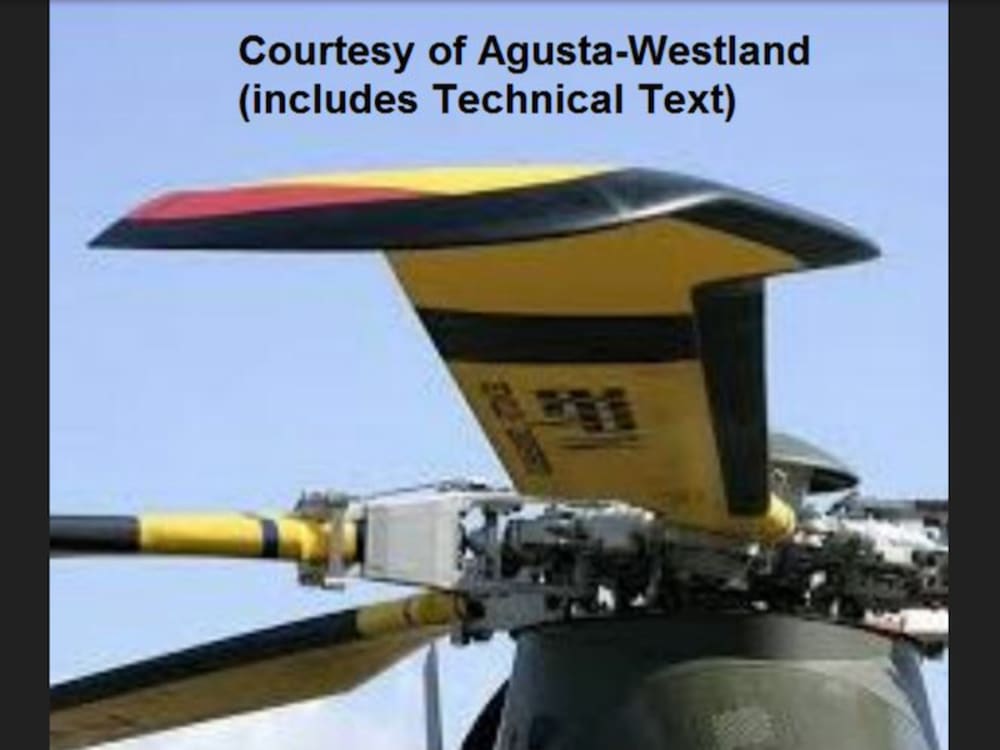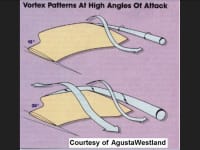BERP rotor improvements provide an advantage in maneuverability/precise positioning/ low vibration levels and fast reacting low level situations. The increase in lift efficiency will also penetrate many civil markets/ based on the reduced fuel consumption for the same load carrying capacity (Technical description courtesy of Agusta Westland).
A technique for containing the adverse effects of aerofoil pitching Moments is incorporated in the construction of the BERP blade. The layout of the aerofoil sections comprises a main lifting section using the RAE 9645 from .65R to .85R. The aft camber of this produces a strong nose down pitching moment which reaches its maximum value on the advancing side of the disk. On the retreating side the moment drops due to the low dynamic head. "The nose down twist of the advancing blade is analogous to forward cyclic pitch, and leads to unacceptable handling characteristics and Flight envelope limitations.
Fortunately aerofoils with very high angles of attack are only required at the outboard blade stations so this relaxed performance requirement allows the RAE 9645 nose down condition to be balanced by the nose up moment of the reflexed inboard aerofoil sections of the RAE 9648 section.
In the tip region the use of the thin aerofoil section; RAE 9634; is made possible by the behaviour of the tip planform itself at high angles of attack. This behaviour overcomes the undesireable lift limitations associated with this section which would otherwise prejudice the retreating blade performance of the rotor.
Anhedral is used in the outer tip, this has proven very beneficial in terms of hover performance and has therefore been retained The shape of the anhedral has been made smoother to aid manufacturing and the ultimate angle has been increased from 20° to 25° with a slight increase in the total vertical displacement of the tip.
The RAE 9634 blade tip section was chosen to reduce drag at high speed, but the real performance benefit is considered to be the behaviour of the tip at high angles of incidence.
In order to avoid large couplings due to mass and stiffness offsets from the feathering axis of the basic blade a forward offset of the tip quarter chord avis has hern introduced. This offset produces a local blade area increase which for a given limiting retreating blade angle of incidence produces an increase in rotor thrust.
In contrast the advantage of retro-fitting BERP rotors tailored to solve specific problems is a more elegant approach and more cost effective. This is particularly the case with the Bol05 and the BK117 because the running gear and controls for both of them belong to the same family and if necessary components may be mixed and matched to satisfy the detail changes which result from such an exercise.
This tip technology is not restricted to improving helicopter rotor blades alone. Because it is an end effect arrangement there is reason to believe that the basic concept could be carried to propellor technology or even tilt rotors.
Like this entry?
-
About the Entrant
- Name:John Mitchell
- Type of entry:individual
- Software used for this entry:RhinoCAD
- Patent status:none








